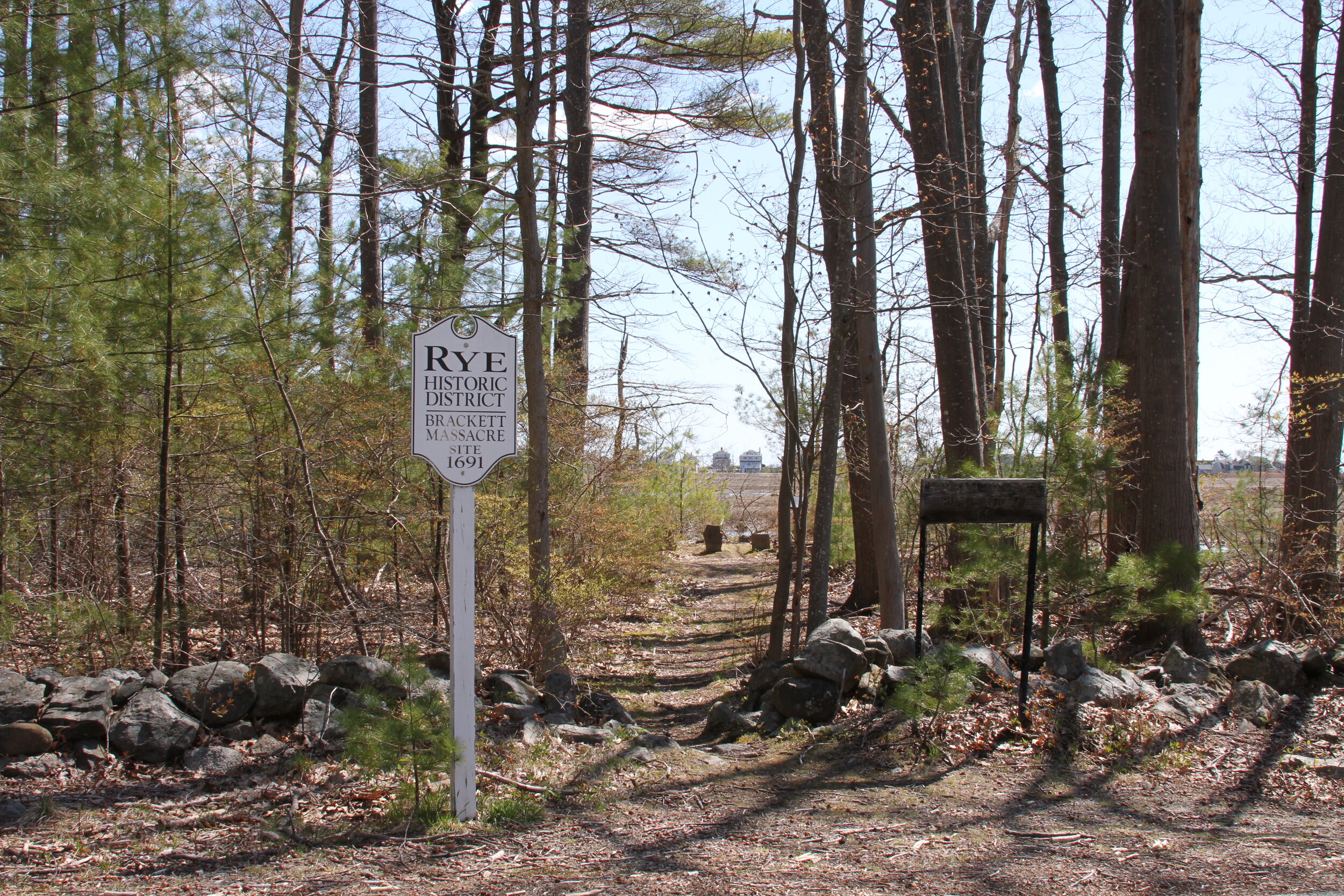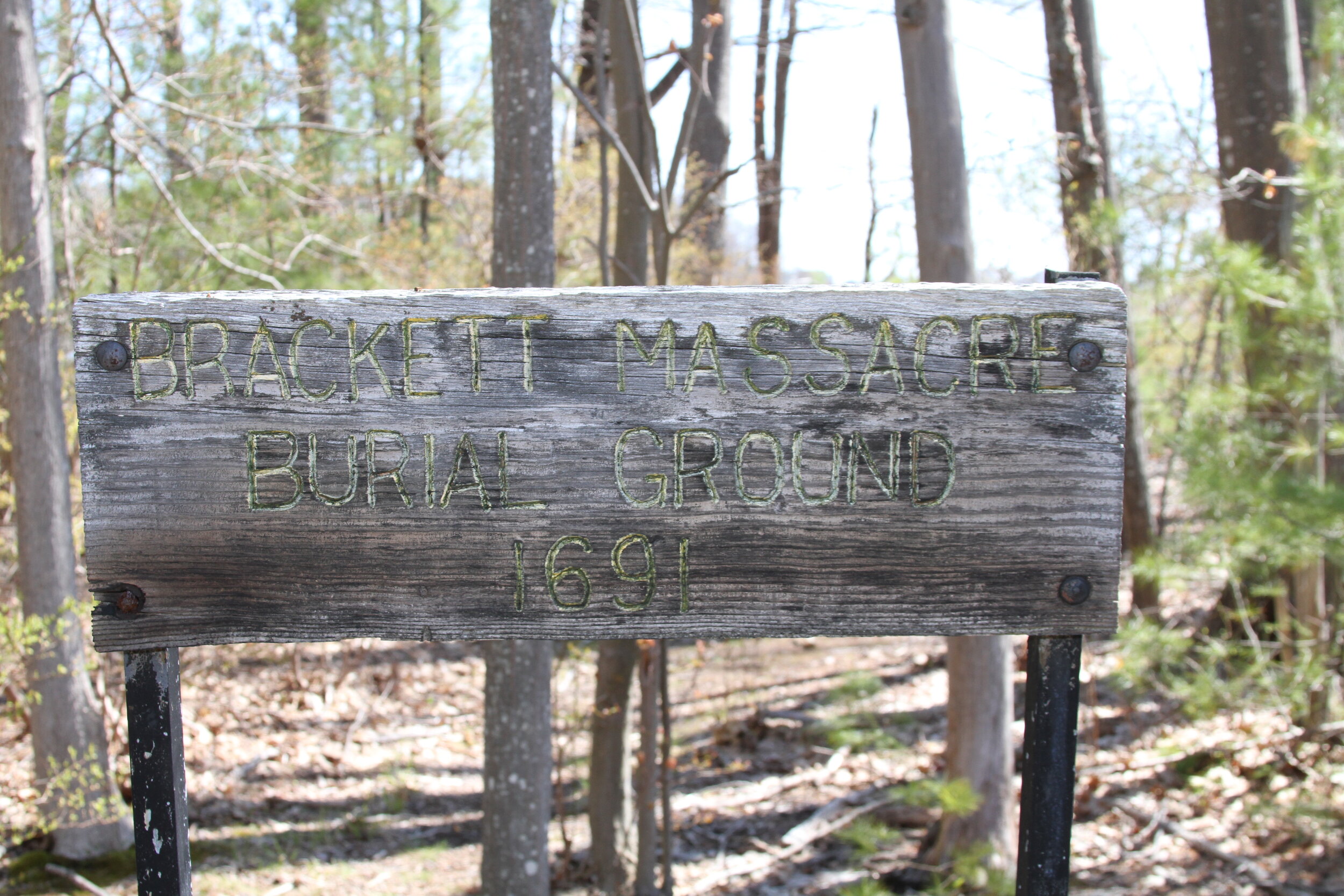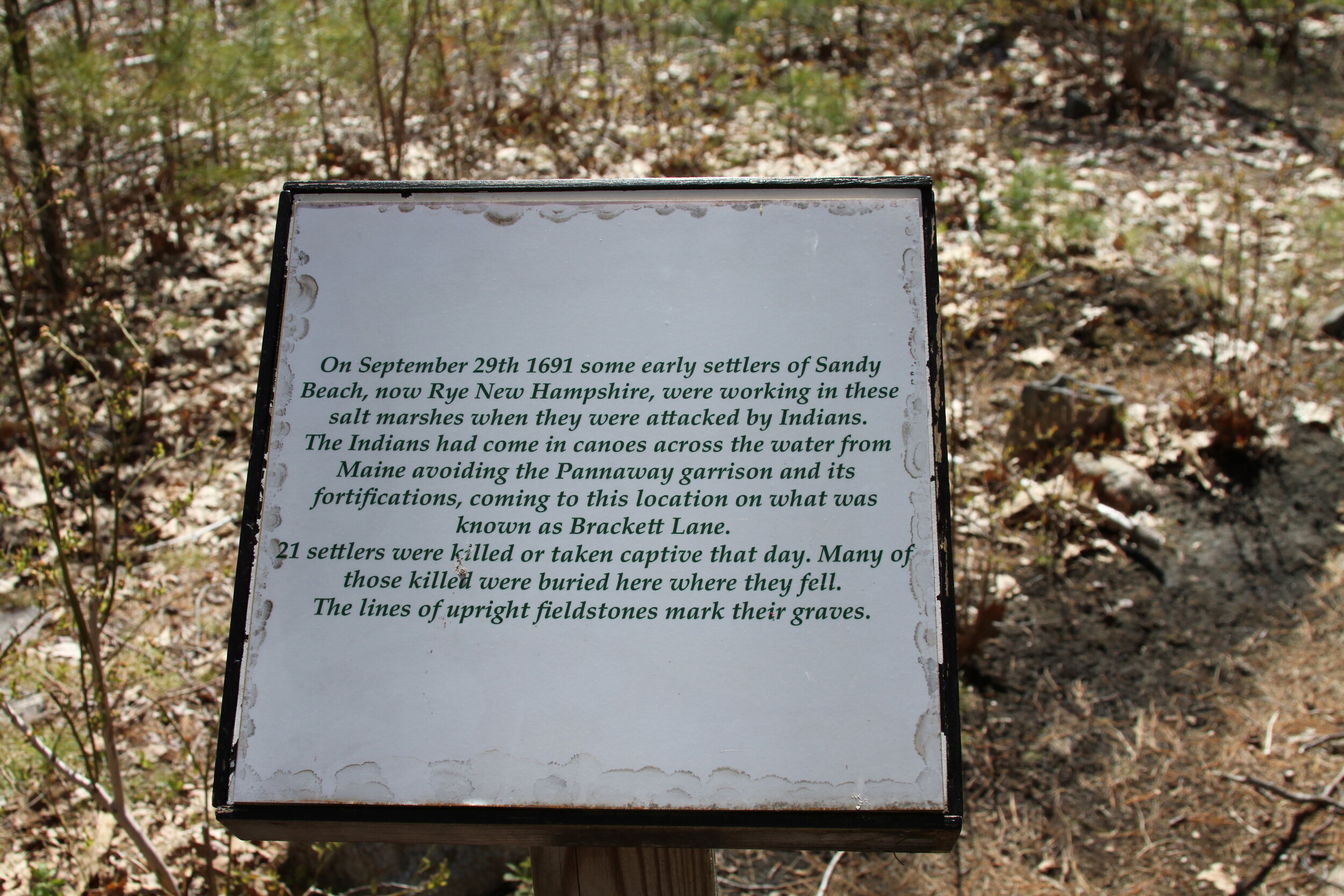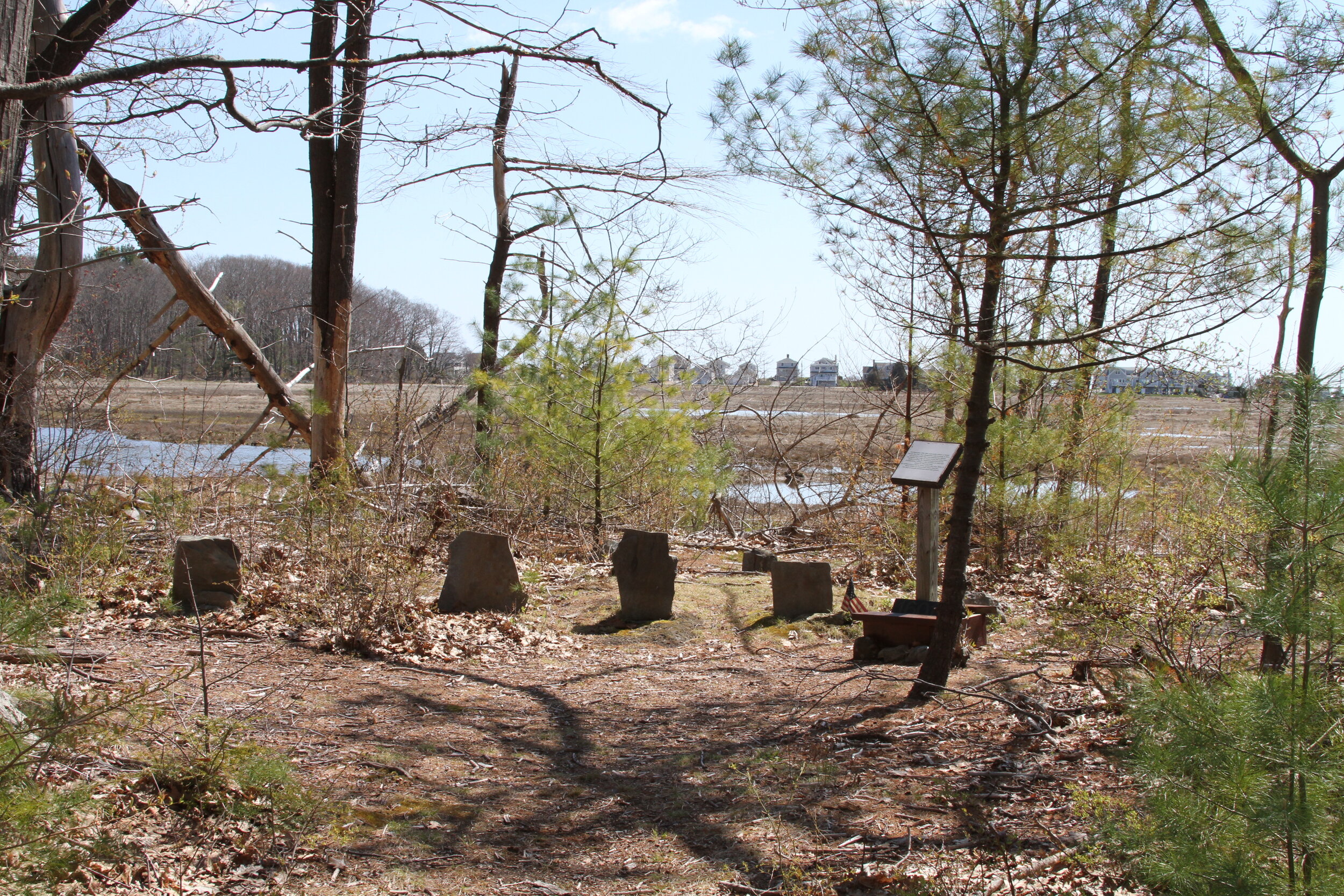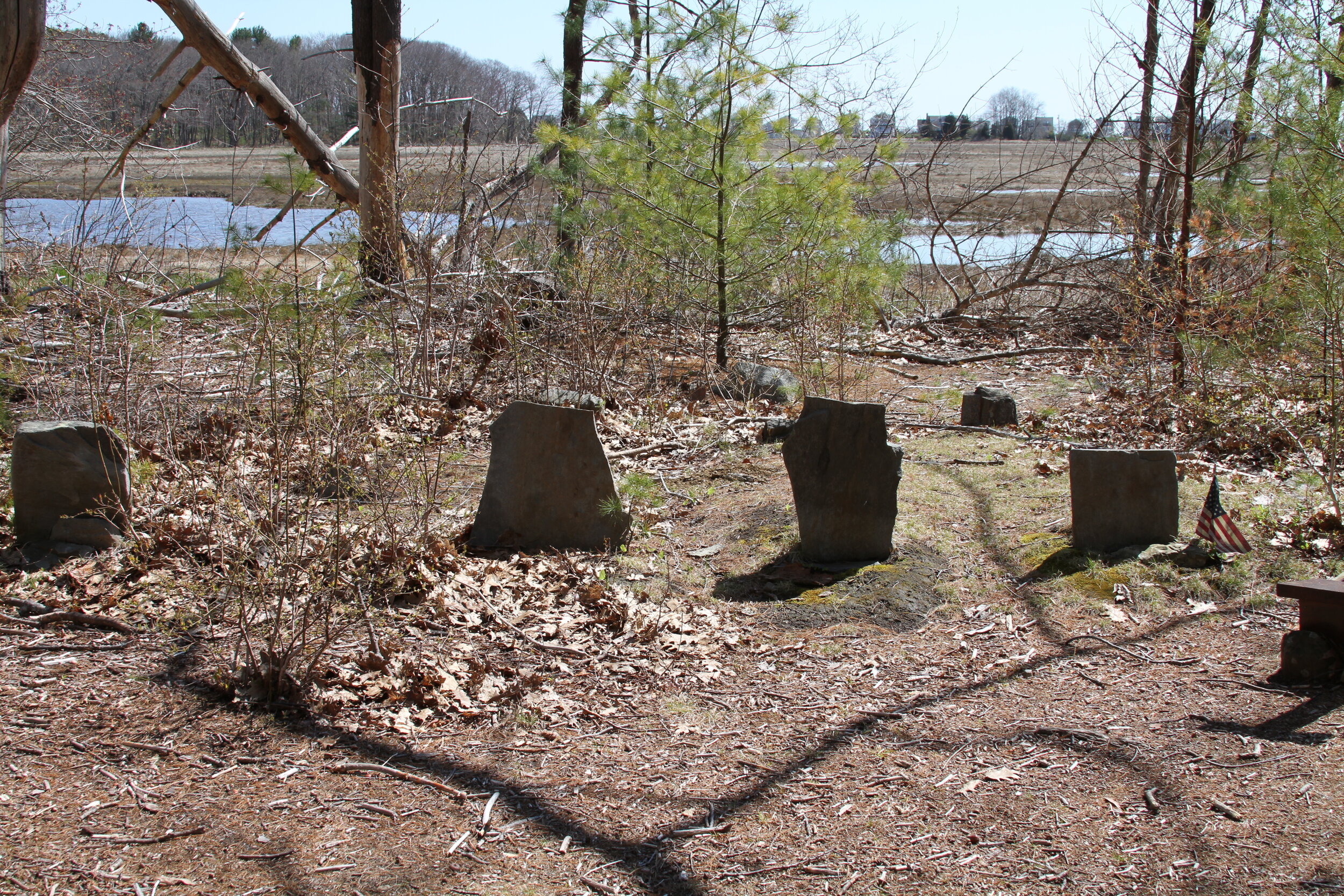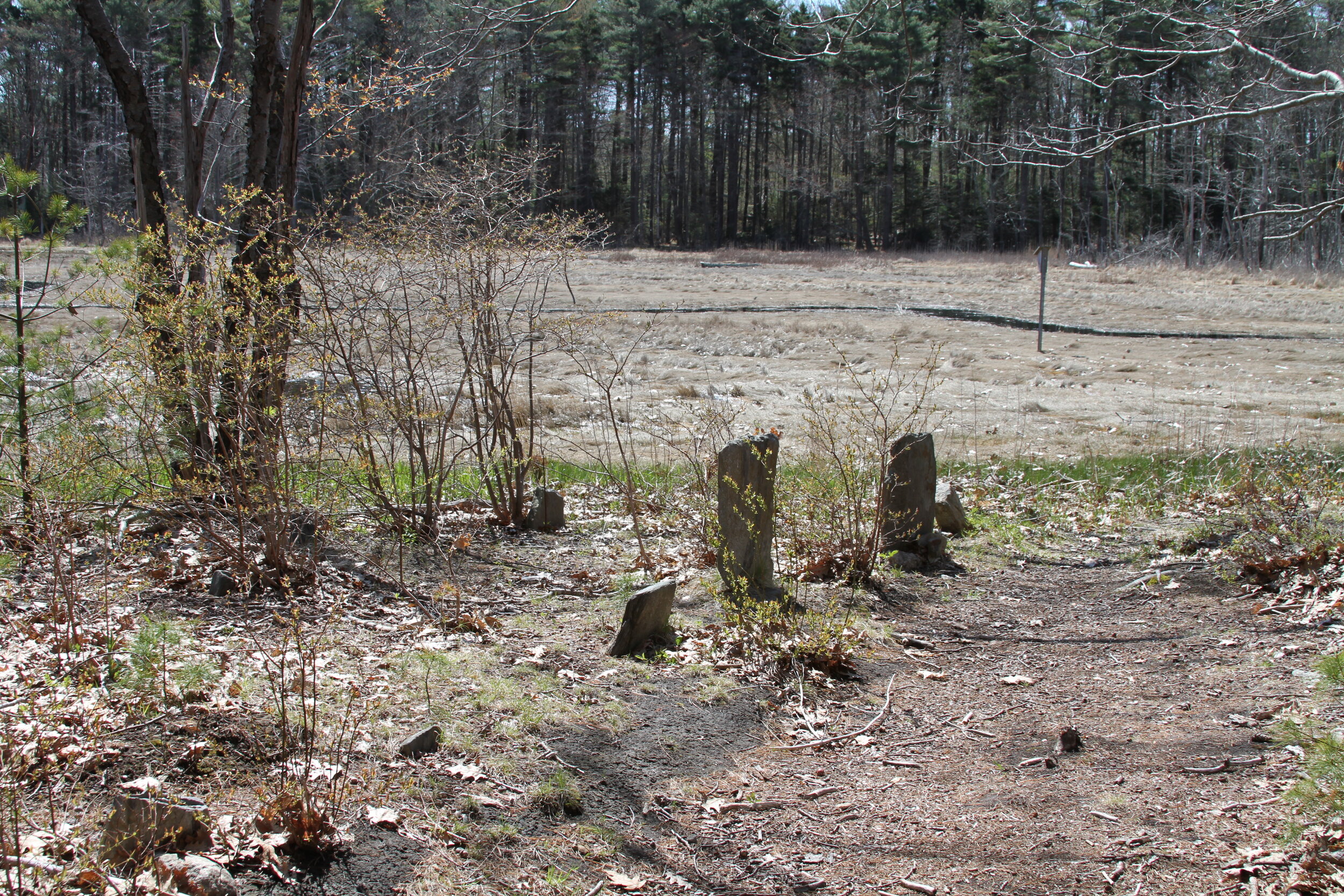The Brackett’s Lane Attack of 1691
“Brackett's Lane, now Brackett Road, is a part of the first road used by the earliest settlers that extended from the present Washington Road near the old ‘Seavey House,’ and is now parallel to Ocean Boulevard.” The site of the attack is located across from 605 Brackett Road, in Rye, NH. The graves mark where 1o settlers were killed.
Here is the account of the day, from “More New Hampshire Folk Tales,” by Eva Augusta Speare.
“On the last Tuesday of September, 1691 a party of Indians, variously estimated from twenty to forty, came from the eastward in canoes and landed at Sandy Beach a little after noon.
The Garrison there, they left unmolested and fell upon a few defenseless families living about half a mile from the garrison; killed some of the members and took captive some others, and burned one or two houses. The severest blow fell upon old Goodman Brackett's and Goodman Rand's families.
Two messengers brought the sad intelligence to Hampton the same afternoon. On their return in the evening, about the time of the moon's rising on reaching Ragged Neck, about half a mile south of Sandy Beach Garrison, they ‘saw as they adjudged about forty Indians coming towards Hampton, with five or six canoes on their heads.’
Having made this discovery the messengers quickly retraced their steps and gave the alarm at Hampton. Henry Dow, one of the town committee, immediately wrote and dispatched a letter to Salisbury, conveying the intelligence to Major Robert Pike who commanded the militia of the county of Norfolk. Major Pike having added a hasty note, forwarded the letter to Mr. Saltonstall, one of the magistrates, who was then at Ipswich ‘on court service’ and by him it was sent to the governor.
The next morning, September thirtieth, a company of men from Hampton hastened to the scene of carnage, where they met Captain John Pickering with a company from Portsmouth. The enemy had gone. They were discovered at Ragged Neck, the evening before. Their tracks were distinctly traced in the sand, as were also ‘the tracks of two women and one child’ whom, with others, as is supposed, they carried into captivity. The companies found the dead bodies of ten persons, and thought from what they found in the ashes, that three had been burned with the house. Seven others were missing.
The whole loss was twenty persons, two of whom were very aged men; the others women and children.
Two of the first settlers were killed that day; Francis Rand, and Anthony Brackett who lived near Saltwater Brook, whose house was burned and two children of the family were taken away by the Indians. It is said that the boy was recovered, but the girl was taken to Canada, where she grew up and married a Frenchmen afterwards returning to Rye to claim her share of her father's estate. She took a part of the cattle and about seven acres of land was sold to satisfy her claim.
Anthony Brackett was buried on the eastern side of the highway near Saltwater Brook, the others who had been killed were buried not far away in the hollow of a field near Mr. Remick's home.
Thomas Walford was killed by Indians on the hill on Brackett road near the spot where the home of Mrs. Charles Remick now stands. For many years this little hill was called Walford's hill.
Sometime before the attack, a Mrs. Rand supposed to be the wife of Francis Rand was killed. Mrs. Rand was old and nearly blind and, with that intuition so often given to blind persons, that day was much disturbed by a feeling that Indians were lurking in the neighborhood. She urged her husband to postpone his trip to the mill, as she feared being left alone, but he laughed at her fears, telling her there ‘were no Indians nearer than Winnipiseogee,’ and went to the mill with his corn, returning to find his wife dead, killed by Indians and scalped during his absence.
Mr. Parsons writes, ‘Sandy Beach in common with many other early settlements, suffered terribly from Indians raids.’ ‘How many of the Sandy beach pioneers perished through these sudden and deadly attacks is not known, but the number is large. The records of Indian depredations on the settlement are very meagre and incomplete, but the most disastrous raid of which there is authentic record took place in September, 1691 -- on or near Brackett's Lane.’”
Source: Speare, Eva Augusta. More New Hampshire Folk Tales. United States: Mrs. Guy E. Speare, 1936; pages 86-89.

